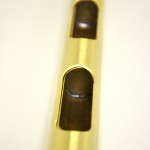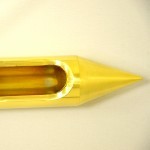Principles for Accurate Samples Using Grain Probes

Correct sampling is not only an integral step in the inspection process, but doing it right is essential to the accuracy of the quality grade measurement. It’s important, therefore, to ensure that the sample really is representative of the whole lot. With this in mind, there are a few simple principles to utilize when obtaining a sample.
For grain in a truck or other container, the best way of obtaining a sample is to use a grain probe.
Grain probes essentially fall into two distinct styles – compartmented (or partitioned) and open handle probes. The primary difference between the two being the presence or absence of compartments within the probe. Lacking compartments, which are actually due to partitions within the tube itself, the open handle probes actually allow you to pour the samples that you obtain from the probe directly into a sample container. Care must be taken using an open hand probe, however, that a disproportionate amount of sample is not taken from the top of the load.
Be sure to keep in mind that these differences alone will account for differences in the results received from the two different types of probes. Hand gain probes are generally available in a variety of lengths, including 5′, 6′, 8′, 10′, and 12′ lengths.
- For accurate grain sampling, location does play a role. When determining the locations from which to obtain your samples, be sure to avoid probing the spout stream. Also, it’s important that your probe reaches the bottom of the lot so that the sample you do get really is representative of the entire lot.
- With the slots on the grain probe closed, put the probe in at approximately a 10 degree angle.
- Keeping the slots facing up, fill the compartments by opening the probe and moving it up and down in two short movements.
- Closing the probe, take it out from the grain and empty the sample onto an area slightly large than the size of the probe that you’re using. Of course, as mentioned earlier, if you’re using an open handle grain probe, you can pour your sample directly from the open end of the probe straight into a dry, clean container.
- As you’re obtaining your sample, take the opportunity to observe the general condition of the grain, looking particularly for any potentially harmful things such as bad smells, insects, large rocks, or pieces of glass or metal.
You’re now ready to test your sample within your own lab for various quality issues or, if an official certificate is required, send to your official grain inspection agency. You can rest assured that by getting the most accurate and representative sample possible, you will know the true condition of your grain at the time it was sampled, as well as a valid certification of the quality of your grain. For more information on grain probes and how you can obtain the best samples possible, please contact us.




